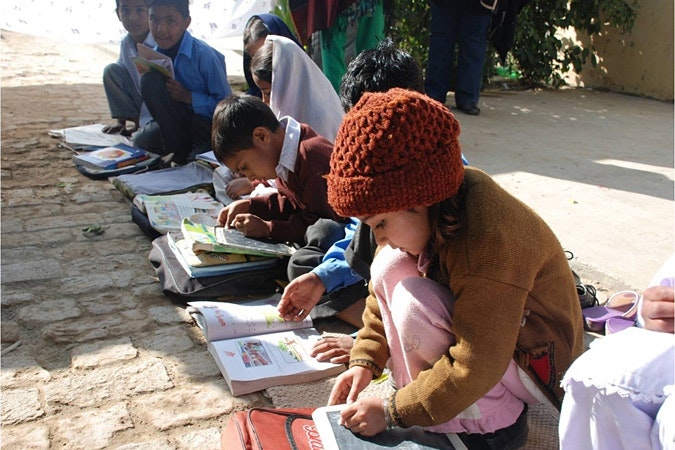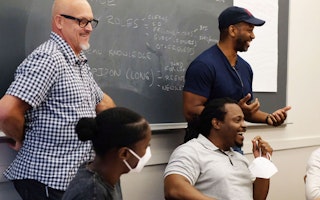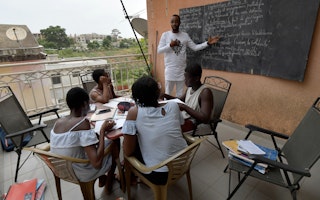Making the Case for Quality Education for All in Pakistan
By Nargis Sultana

Pakistan is slowly getting serious about education, and not before time. The country faces significant challenges; huge disparities in education opportunities—particularly for the rural poor and girls—poor quality education, low enrollment and completion rates, high drop-out rates and low levels of transition to secondary education. The Annual Status of Education Report (ASER), a citizen-led household survey about learning outcomes, focusing not simply on whether children are going to schools but also what they are learning, is helping this change of outlook. Now in its third year, the report seeks to fill a gap in educational data by providing reliable, comprehensive and digestible data at a national level on the status of education of 3 to 16 year olds.
Reports by national and international bodies on education in Pakistan provide the bigger picture. There are 7.26 million children out of school at the primary level, and 58 percent are female according to UNESCO. Overall estimates of 5-16 year olds who are out of school can go up to 20 million children. The literacy rate in Pakistan—those over ten years who can read and write—is 58 percent. Access to education in Pakistan is unequal and inequitable with significant disparities based on gender, rural-urban divide, geographic placement, income, and language of instruction. Quality in many government schools is poor. Enrollment in private educational institutions is 34 percent of total enrollment. The move by some parents to private schools has not helped the fate of government schools, but even private schooling is often inadequate.
ASER Pakistan plays an important role in addressing these challenges through its annual report on the status of children’s schooling and basic learning, namely reading and arithmetic. By mobilizing volunteers across the country, ASER Pakistan conducts an annual measurement in these areas and then interprets the results, using them to advocate for policy change. In 2011, ASER mobilized 5,000 volunteers to survey 85 districts, 2,599 villages, 3,642 schools, 49,793 households, 146,874 children and 51,654 mothers. This is a huge growth from ASER’s first year of operation when 450 volunteers conducted research in 11 districts. The National Education Assessment System is the only other nationwide effort to measure learning outcomes.
ASER survey data is compiled annually in a report and shared with government, civil society organizations, local communities, media, lawyers, bilateral and multilateral agencies and other parties working in education. ASER results are used in plenty of different ways; repackaged as policy briefs, posters, and village and district report cards in order to highlight key findings for particular audiences. This all contributes to engaging and pressuring decision makers to make the change that’s needed.
Unlike many large internationally led reports, ASER reports have inspired activism from civil society, local communities and parents on the ground. By conducting policy seminars and briefings involving public representatives, government officials and civil society activists, ASER impacts the debate directly. ASER seeks to empower all citizens to seek evidence and take appropriate action.
ASER Pakistan has successfully mobilized parents to advocate for the importance of education themselves. A parent of one school girl said “I initially believed that the ASER team was here to glean information but by the time they finished, they did a lot more than just that. They opened the door to education for many girls in my village.”
The effects of ASER reports can be seen firsthand. “I was shocked to see that all three of my children could not recognize a simple word. It is imperative for all the parents to look into this matter,” said a mother in Rawalpindi. Soon after this, members of the school council were delegated with the responsibility of finding out why the learning outcomes of the children in that particular school were so alarmingly poor.
As ASER continues to grow, positive signs from the Government of Pakistan have begun to emerge. There is an increasing realization—across different groups in the country—that every child in the country needs to be educated. Article 25-A (Right to Education) has been inserted in the constitution which states, “the state shall provide free and compulsory education to all children of the age of five to sixteen years in such manner as may be determined by law.” The amendment to the constitution is the first step; it is now imperative that legal provisions be made for the implementation and enforcement of this right. With elections coming up, it is hoped campaigning political parties will include the Right to Education in their manifestoes.
In 2012, as ASER expands to cover all districts of Pakistan and its yearly surveys build a picture of the status of education across time, it is hoped the engagement of students, parents, local communities, citizens, civil society, academics, local, provincial and federal government officials, and international organizations will increase and become embedded in the education debate in Pakistan. Crucially, ASER aims to make this debate evidence-based and ensure any progress can be tracked. By sharing its data and analysis, ASER will have a significant role to play in generating this evidence, creating tools for monitoring and evaluation and forming a basis for sustainable citizen engagement on education in Pakistan.
The Annual Status of Education Report for Pakistan 2011 can be accessed here.
Nargis Sultana is a program officer at Foundation Open Society Institute-Pakistan.

